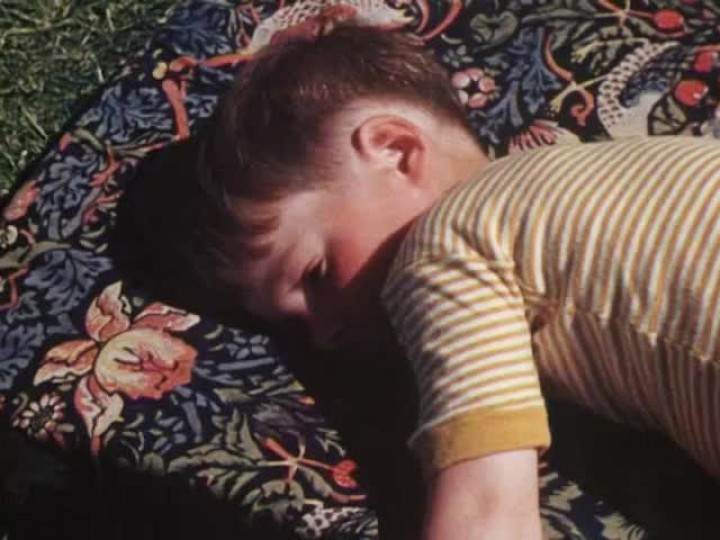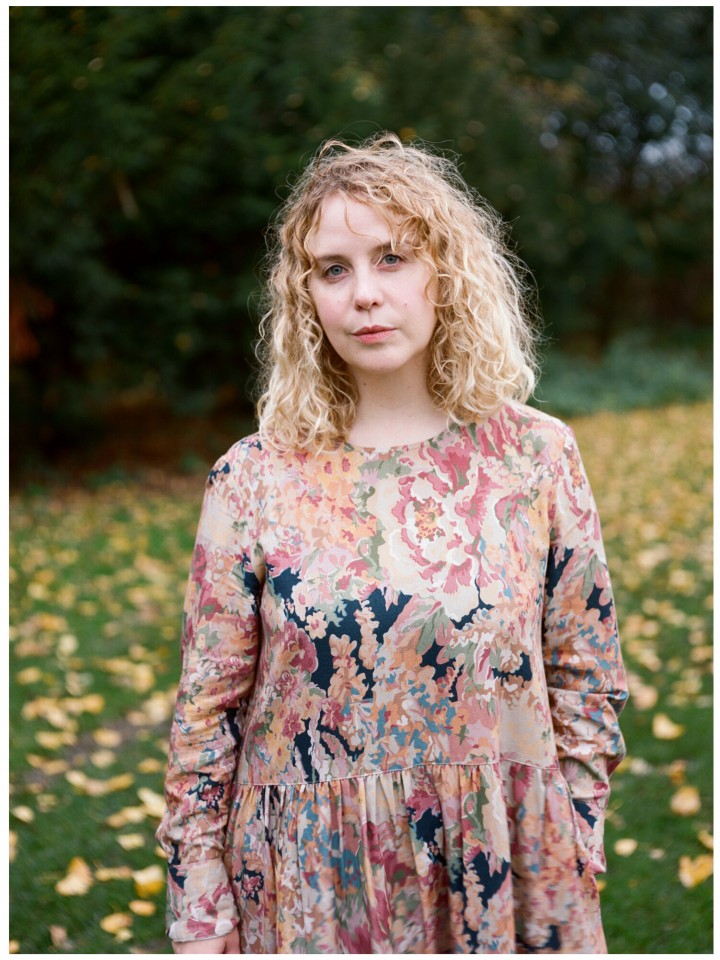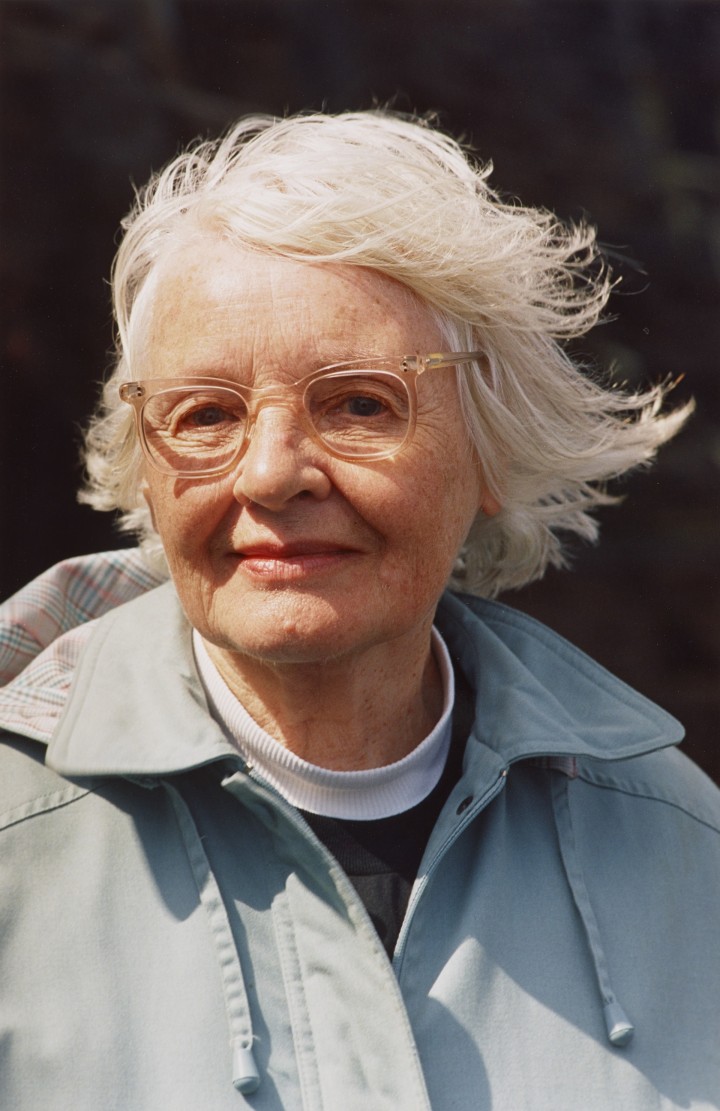Scottish Art News
Latest news
Magazine
News & Press
Publications
My Favourite Scottish Work of Art: Helen Nisbet
By Helen Nisbet, 01.07.2021

It has been difficult to respond to this question, what is your favourite Scottish work of art? I’ve been remembering the Scottish painters who ignited my love of art as a teenager, the artists who changed the way I looked at art when I moved to Glasgow. I’ve been thinking anew about the Scottish artists I’ve worked with who inspire me, as much as anyone ever has, with their ideas and brilliance (you know who you are!). But I have decided to talk about one work (and to cheat a little by mentioning another), which is deeply and personally meaningful to me.
Margaret Tait’s film poem, Happy Bees, filmed in Orkney in 1954, holds so much in 15 minutes - her words; chubby kneed children playing - their lilting dialects as they bake with mud and balance and not balance on a length of wood; wildflowers and of course, the crashing, foaming sea. The film is beautiful; crafted, like all her work, with intelligence, lightness and empathy. For me, it is like watching my own childhood, like watching my parent’s childhood and perhaps most poignantly, like watching my Orcadian grandparents, being with them again for a moment. The film is accompanied by a soundtrack of Scottish Country Dance Music and when I close my eyes I am a kid myself, asleep in a village hall, music fading in and out of my consciousness as I sleep on my mam’s knee. When I watch Happy Bees I feel a pain in my throat and chest.
The work also brings to mind another of my favourite Scottish works of art, Bridgit (2016) by Charlotte Prodger. Prodger’s film also utilises landscape, bodily experience and a poetic narrative. Brigit speaks of female friendship, time and change. And Like Happy Bees it speaks of home - domestic, daily life and also the landscape and feeling of a place. The love is palpable. The pain in my throat and chest is love.
 Helen Nisbet. Photograph by Robin Silas.
Helen Nisbet. Photograph by Robin Silas.
Helen Nisbet is a curator and writer from Shetland who lives and works in London. She is Artistic Director for Art Night and previously held curatorial positions at organisations including Cubitt; the Arts Council Collection; the Contemporary Art Society and the Lighthouse and has contributed to programmes at Creative Time, New York; the Venice Biennale and London based galleries Hollybush Gardens and The Sunday Painter.
Nisbet is a visiting lecturer for Royal College of Art; Goldsmiths and Slade and sits on the advisory board for a-n, Art Quest and Gaada. She was a member of the Arts Council Collection's Acquisitions Committee from 2018 - 2020 and served as juror for The Margaret Tait Award; Glasgow International, the Film and Video Umbrella Curatorial Award. Her publications include It Disappears in Blue and Red and Gold (Bookworks, 2018) and These are the stones we have instead of trees (Transit Arts, 2020).
Curated by Nisbet, Art Night 2021 is titled Nothing Compares 2U, after the song penned by Prince and performed by Sinead O’Connor. The programme takes inspiration from defiance in small acts and moments of self-determination. To celebrate the festival's fifthe edition, Art Night has an extended run-time to a full month, from 18th June to 18th July, and is taking place throughout the UK. Visit www.artnight.london to discover more and to join in.
 Gunnie Moberg, Margaret Tait. National Galleries Scotland. Purchased 1997. © Estate of Gunnie Moberg.
Gunnie Moberg, Margaret Tait. National Galleries Scotland. Purchased 1997. © Estate of Gunnie Moberg.
Margaret Tait (1918-1999)
Margaret Tait's Happy Bees can be watched on the National Library Scotland's Moving Image Archive. Of this film Tait said, "Happy Bees was intended to be an evocation of what it was like to be a small child in Orkney; when, one (wrongly) remembers, it was sunny all the time, and everything is bursting with life. A film about what surrounds a child, so quite a lot of it is watched at child level."
Tait was an Orcadian film-maker, writer and artist. She was born in Kirkwall, the capital of the archipelago, and later moved to Edinburgh, where she studied medicine at the university. This led to her joining the Royal Army Medical Corps, in which she served in India, Ceylon and Malaya. Her photography began to develop on these trips, compiling photo albums of her visits to Kashmir, Agra, Delhi and Kandy. Changing paths, from 1950 to 1952 she studied film at the Centro Sperimentale di Photographia in Rome, leading to her establishing the production company Ancona Films on her return to Edinburgh.
In the 1960s, Tait moved back to Orkney where, over the following decades, she made films inspired by the islans' landscape and culture. Her works were subsequently shown at screenings at National Film Theatre, London, Berlin Film Festival, Centre for Contemporary Art, Warsaw, Arsenal Kino, Berlin, Pacific Film Archives, San Francisco, and Knokke le Zoute, Delhi. Tait was given a retrospective at the 1970 Edinburgh Film Festival. Her only feature length film, Blue Black Permanent (1993), opened the Edinburgh International Film Festival.
Other artworks in the series 'My Favourite Scottish Work of Art' have been selected by Victoria Crowe, Sir Mark Jones, David Eustace, Bill Paterson, Barbara Rae, Prof. Murdo Macdonald, Neal Ascherson, Brandon Logan, Jock McFadyen, Sam Ainsley (twice), Andrew O'Hagan, Denise Mina, Caroline Walker, John Byrne, Sir James MacMillan, Joyce W Cairns, Sir Tim Rice, Alison Watt, Ian Rankin, Joanna Lumley, Neil MacGregor, Kirsty Wark, Michael Portillo and James Naughtie.




